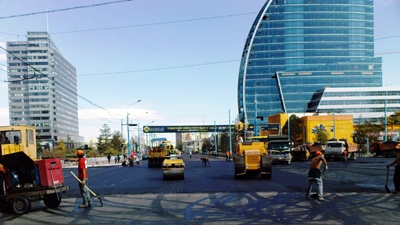- Mongolia today is at the cusp of a major economic transformation as it begins to exploit its vast copper, gold, coal, and other mineral resources.
- If the right institutions and policies are put in place, this resource boom can be used for the sustained improvement in the lives of current and future generations of Mongolians.
- Achieving this potential is far from automatic as there are numerous examples of commodity rich countries which have performed worse than those without such endowments, hence the frequent use of the phrase “resource curse”.
- Natural resource production is an “enclave” activity with few linkages to other sectors of the economy, which means that mining-driven high GDP growth numbers by themselves do not automatically imply broader development of the other sectors of the economy or large scale job creation.
- Most importantly, mineral resource revenues significantly increase opportunities for corruption, a risk that is particularly acute in Mongolia given the scale and pace of the change, a very heavy dependence on natural resources, and the already close connections between political and construction industry circles.
- One of the main mechanism for avoiding these problems and achieving sustained growth through a diversified economy will be public investments in infrastructure, education, and health to provide public goods, address market failures, crowd in private investments, and achieve redistributive goals. Infrastructure needs are considerable for a vast, scarcely populated, and sub-arctic climate country such as Mongolia with poor transport connectivity and high unit costs of service delivery.
- Financing will be less of a constraint as government revenues are projected to triple in the next seven years as the mines go into full production, and increase steadily thereafter.
- The key challenge will be to effectively use these increasing revenues, with the major responsibility falling on the Government’s public investment system for planning and implementing capital projects.
- Meeting this challenge will require adherence to four broad principles.
- First, spending should aim to achieve “allocative efficiency” by shifting resources from less productive sectors to more productive ones (“spending in the right areas”).
- Despite the huge increases in revenues, the needs will continue to outweigh the available resources, at least in the near future, and therefore some hard decisions about infrastructure prioritization will have to be made.
- Second, public expenditures should be grounded in a sound macro-fiscal framework to avoid the deleterious effects of commodity price volatility and to prevent real exchange rate appreciation from an investment spending boom not modulated to the absorptive capacity of the economy.
- Third, the public investment management system should be sound so that that capital projects are well prepared, implemented in a transparent and cost effective manner and well maintained (“technical efficiency”).
- Finally, the construction sector has to be able to effectively respond and meet these increasing demands placed on it by the government, and the investment climate should be such as to encourage the growth of the sector, thereby increasing the absorptive capacity of the economy.

